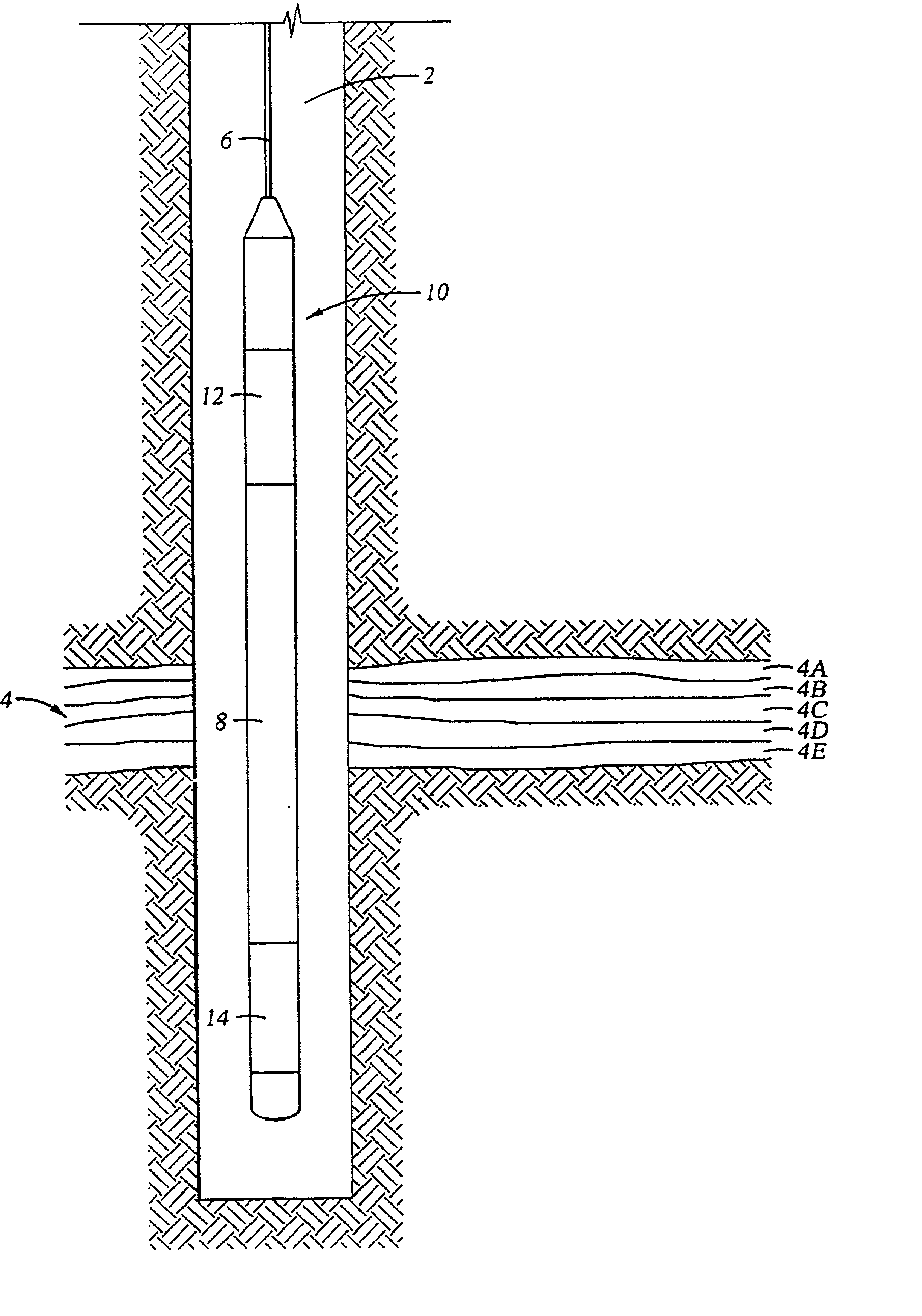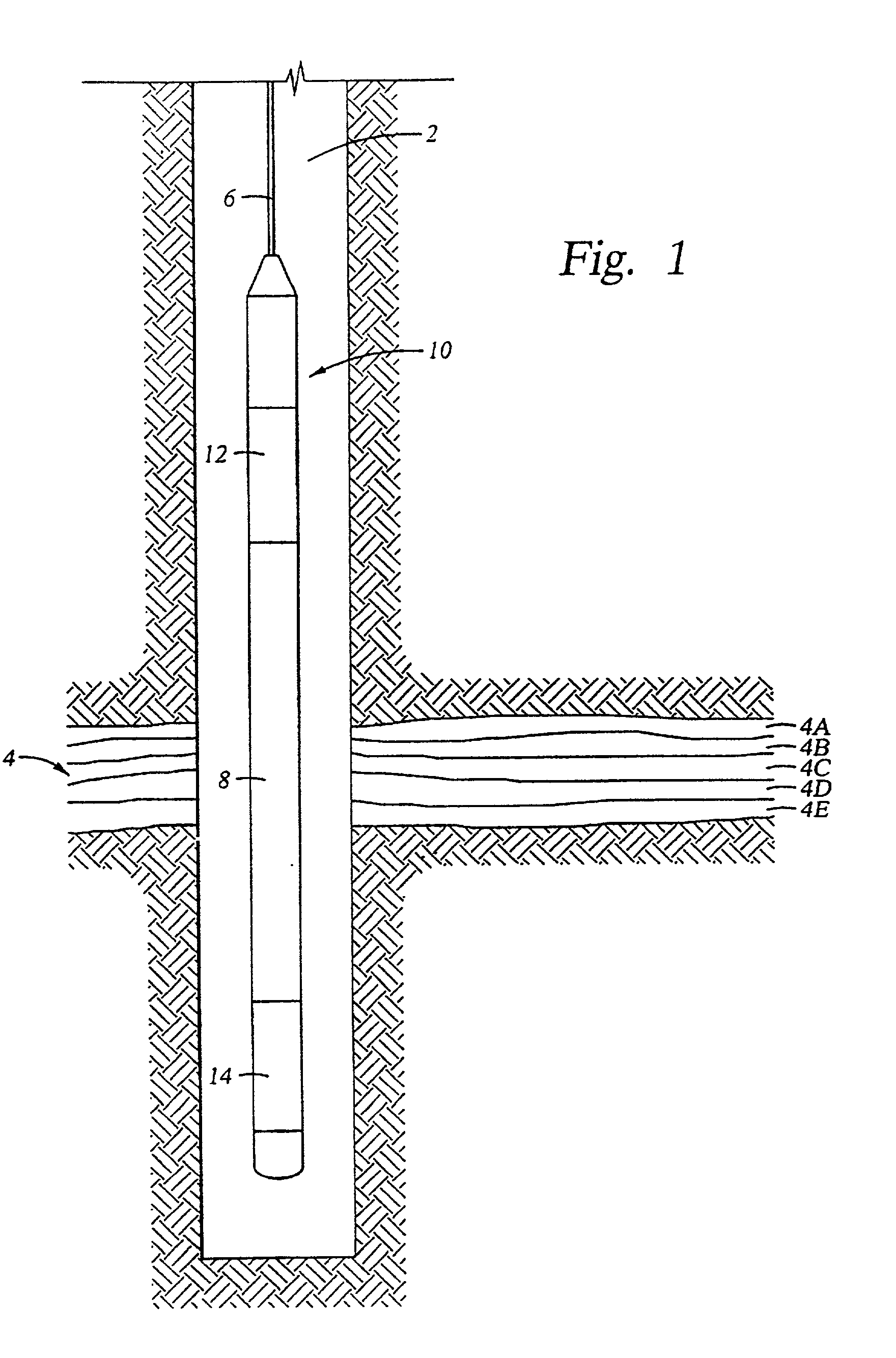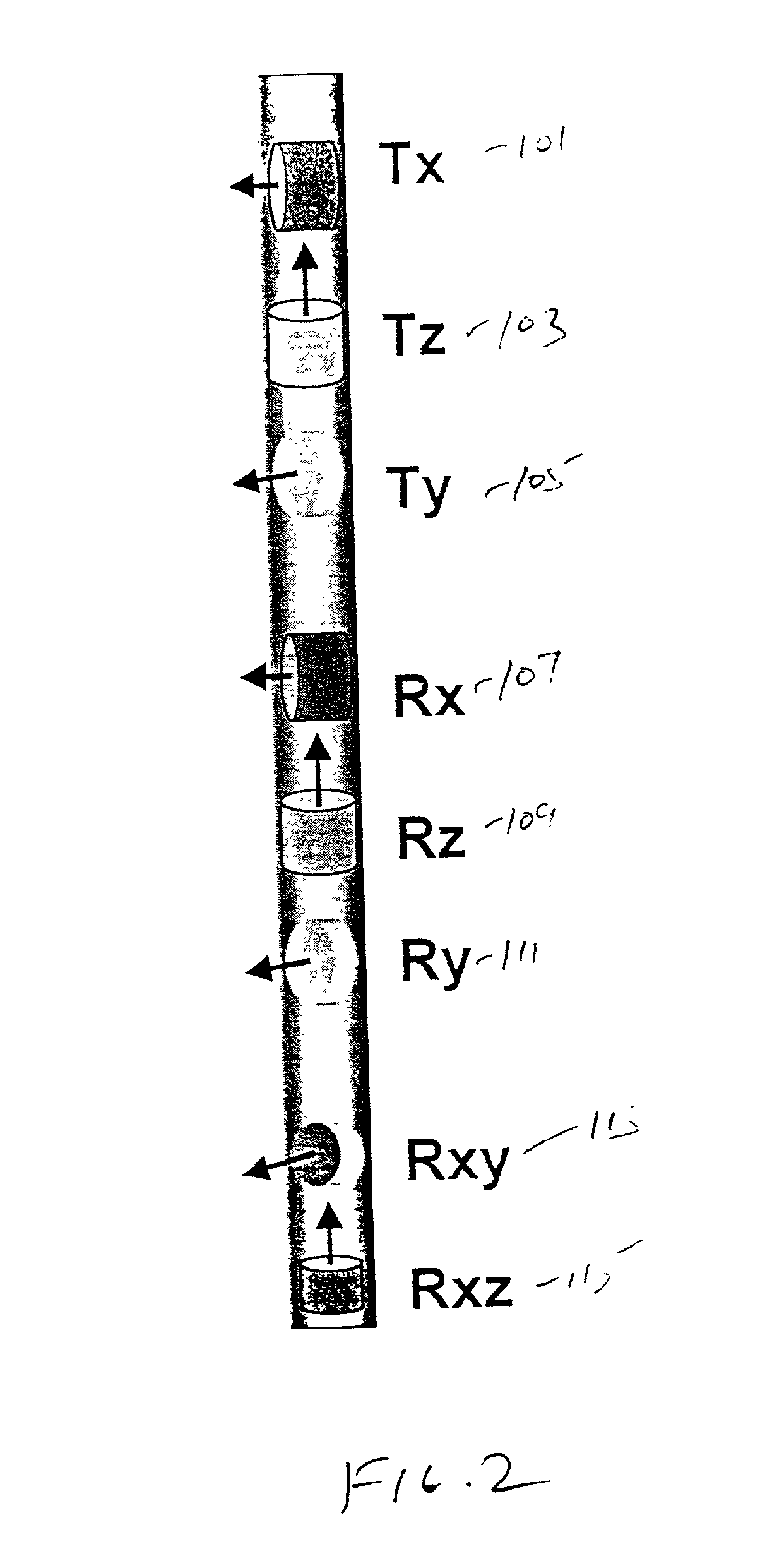2-D inversion of multi-component induction logging data to resolve anisotropic resistivity structure
a multi-component induction logging and anisotropic resistivity technology, applied in the field of measurement interpretation, can solve the problems of borehole, invasion effect, borehole, etc., and achieve the effect of solving complex situations such as high resistivity contrast and thin layers, different and sometimes inconsistent, and adjusting the logging data
- Summary
- Abstract
- Description
- Claims
- Application Information
AI Technical Summary
Problems solved by technology
Method used
Image
Examples
Embodiment Construction
[0057] Turning now to FIG. 5, the results of using the method of the present invention are shown. The shaded portion of left track 301 shows the model of the invasion zone that was used. The actual resistivity of the invasion zone is shown by the solid line in the track 311. The actual horizontal resistivity of the formation is shown by the solid line in track 321 while the solid line in track 331 shows the actual vertical resistivity of the layers.
[0058] Synthetic data were generated by forward modeling using the method given by Tamarchenko and Tabarovsky and 1% random Gaussian noise was added. Starting with an initial model in which the bed boundary locations are known and fixed, and with an initial isotropic model having a uniform resistivity of 10 m for the formation and for the invaded zone, the data were first inverted using only the 3DEX.TM. data. The solid line in the track 301 is the inverted length of the invasion zone, the dashed line in track 311 is the inverted resistiv...
PUM
 Login to View More
Login to View More Abstract
Description
Claims
Application Information
 Login to View More
Login to View More - R&D
- Intellectual Property
- Life Sciences
- Materials
- Tech Scout
- Unparalleled Data Quality
- Higher Quality Content
- 60% Fewer Hallucinations
Browse by: Latest US Patents, China's latest patents, Technical Efficacy Thesaurus, Application Domain, Technology Topic, Popular Technical Reports.
© 2025 PatSnap. All rights reserved.Legal|Privacy policy|Modern Slavery Act Transparency Statement|Sitemap|About US| Contact US: help@patsnap.com



